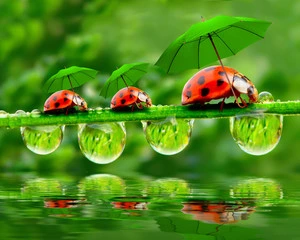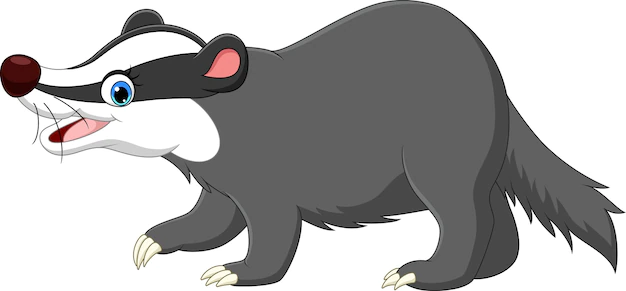Farmland is an extremely rich environment teeming with life. There are the crops we cultivate on the farm and the pests that plunder them, and then, there are the animals and other life forms that live off the land and benefit the farmer in many ways. Chemical pesticides used on the farmland can harm many of these beneficial
animals and life forms. Innovative, non-chemical pest control methods avoid this collateral damage and maintain the diversity of life on the farm.

The food we cultivate depends on a complex web of fascinating animals that help farmers. When someone mentions farm animals, many of us immediately think of animals kept in captivity, such as cows, pigs, sheep, chickens, and goats. But there are also a variety of wild species, both big and tiny, that are essential to the efficient operation of our farms.
The complex web of life supports a wide range of beneficial animals that benefit both us and the crops we raise. You might be shocked! Consider the soil on a farm. The Earth’s biological diversity is by far greatest in the farmland soil. There are countless numbers of beetles, springtails, mites, worms, spiders, ants, nematodes, and other species in the soil food web on a farm.
This diverse community of soil organisms creates channels for rainwater to permeate the soil, offers plant nutrients, and breaks down organic debris from past crops. Beneficial soil organisms, insects, and larger predators that patrol the soil’s surface act as checks and balances on the food chain and keep farms fruitful. Let’s take a closer look at some of the beneficial animals on the farm.
Earthworms
It’s challenging to feel good about earthworms, but these inconspicuous creatures can be quite supportive of farms. Earthworms don’t have legs. They have no face or eyes, and their bodies are as elastic as rubber. They produce mucus, a slime that makes it easier for them to move through the dirt. However, these little beneficial animals can be very supportive of farmers. The soil is broken up by earthworms, who also add vital minerals and build tunnels that improve air and water penetration. Most of the hundreds of species of earthworms found in the dirt are beneficial to farm soil health and can increase fertilizer effectiveness. It’s true that some exotic species of earthworms might have a harmful impact on forest soils; however, most earthworms are allies on farms.
Millipedes
The name millipede is derived from the Latin word for “thousand legs.” In fact, there are no millipede species with a thousand legs. Most have a maximum of several hundred. Despite their unattractive appearance, millipedes are harmless to humans and provide many advantages for farm soils. Millipedes shred the organic debris left behind from earlier crops and incorporate it into the soil. As a result, the crop residue is broken down more quickly, increasing the surface area available for use by smaller soil organisms like fungi and bacteria and improving the soil’s fertility.
Ladybugs
Ladybugs, also known as lady beetles and ladybird beetles, are tiny but strong. Farmers and gardeners greatly benefit from the contributions of these little flying insects. One of the most prevalent ladybugs in North America is the convergent ladybug (or lady beetle). Aphids, one of the most troublesome insect pests for farms and gardens, are devoured by ladybugs. One ladybug may eat between 50 and 60 aphids every day. Additionally, ladybugs eat thrips, white flies, mealy bugs, mites, scales, and other insects. Gardeners and farmers value ladybugs so highly that you may purchase them from providers. Ladybugs are the official state insect of Delaware, Massachusetts, New Hampshire, North Dakota, Ohio, and Tennessee, which is another indication of how highly regarded they are.
Read more: Organic Production
Pollinators
Plants require pollinators, as you may remember from your school days. Why? Just a reminder: for a plant to generate seeds, pollen from the male anther must be transported to the female stigma. Almost 90 percent of North America’s flowering plants and more than 150 food crops depend on pollination. Pollinators play a key role in this process. They carry out the essential pollen exchange. Hummingbirds, butterflies, moths, and wasps are just a few of the beneficial animal species that aid in pollination. Bees, however, carry out the labor-intensive work of moving significantly more pollen than other creatures. Bees spread pollen as they forage, fertilizing a wide range of plants and significant crops. Although European honeybees and bumblebees are the most well-known bee species, there are more than 4,000 kinds of bees in total! It is crucial to preserve pollinator habitats, such as wildflower meadows on the borders of cultivated land, in order to save these hardworking, beneficial animals from extinction.
Spiders
What is it about spiders that makes humans uncomfortable? Is it the way they pounce so rapidly when prey is around, or is it their sticky, frequently difficult-to-spot webs? Most individuals find something about spiders unsettling. However, spiders are very helpful to us. We would face hunger if spiders vanished. According to Norman Platnick of the American Museum of Natural History in New York, “Spiders are the main insect controllers. Without spiders, those pests would destroy all of our crops. According to a study, more than 600 species of spider patrol U.S. croplands to keep pests that consume crops in check.

Coyotes
Coyotes are a species that can benefit farms despite having a bad reputation as pests and annoyances. Coyotes are adept predators that control populations of rodents, including rabbits, squirrels, gophers, voles, and mice, that can damage crops. In fact, eliminating coyotes from a region can lead to explosive growth in rodent populations. Although coyotes are omnivores and occasionally consume fruit, berries, and vegetables, 90% of their diet consists of meat. They don’t endanger the crops of farmers. Coyotes, who are related to dogs and wolves, have managed to coexist with people and even widen their territory.
Coyotes, which formerly lived in the western part of the United States, may now be found in every state but Hawaii and have dispersed far south into Central America. Because coyotes can attack and kill animals in packs, ranchers occasionally may have a problem with them. The typical remedy involves an adequate fence along with a livestock guard dog or two patrolling the area and removing the coyote.
Snakes
Snakes are misunderstood. The twisting reptiles appear to elicit an almost visceral disgust in many individuals. However, snakes are often timid animals who avoid interacting with people. Twenty of the approximately 50 snake species found in North America are poisonous, but even they avoid coming in contact with people. Snakes prey on gophers, field mice, rats, rabbits, and other rodents that harm crops by eating them or burrowing into their hideouts while they slip about our fields and avoid us.
Skunks
Skunks are Grade A terrible, as everyone whose dog has ever been sprayed by a skunk knows. Nobody wants to be near them. Skunks are scary, and for a good reason, too. However, these sluggish, unpleasant creatures have advantages for farms. Field mice, voles, and pest insects like caterpillars and grubs are all eaten by skunks, which helps keep these pests in check. Skunks eat grass, leaves, and berries as well. Skunks, however, are unpopular among beekeepers. Skunks won’t be deterred by bee stings because of their thick fur, and they will seek out honeybee colonies to eat the bees.

Bats
These winged creatures are the embodiment of Halloween, and at least since the publication of Bram Stoker’s classic horror novel Dracula in 1897, they have been linked to spooky myths. Some individuals worry that bats will drink their blood like Dracula! But none of the 40 types of bats that live in North America consume blood. The vast majority of bats in the United States eat insects in large quantities. Moreover, three species are nectar eaters that aid in pollinating desert plants. A single insect-eating bat can eat as much of pest insects as its body weight in a single night. Thousands of bats living in a cave can eat literally tons of insects. Economists estimate the annual contribution of insect pest control by bats to agriculture in billions of dollars.
Last Word
Taking all these points into account, animals play an important role on farms. Having a great deal of information regarding the benefits of different animals on the farm can help you with crop productivity. In this article, we have tried to provide you with comprehensive information regarding the significant role of animals in the environment.

